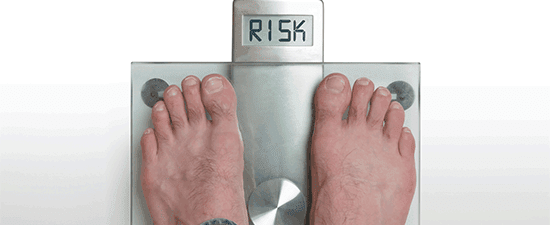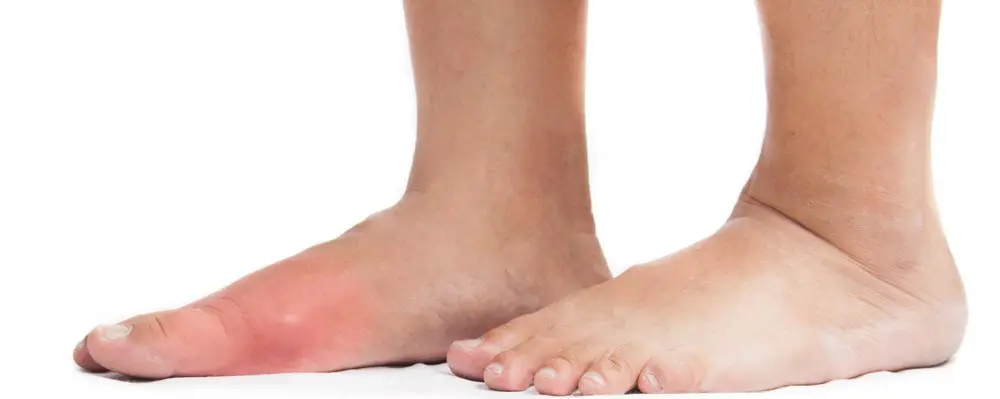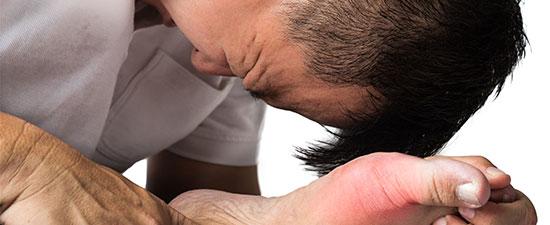Gout: causes, symptoms & treatment
- Published 6/1/2018
- Last Reviewed 10/10/2024

What is gout?
Gout is a type of arthritis that affects the musculoskeletal system, better known as your bones, joints, and muscles. It results from a build-up of uric acid in the joints. When there’s an excess of uric acid in the blood, it crystallizes in the joints, usually the big toes.
The most common gout symptoms include redness, tenderness, swelling, and pain.
- What does gout feel like?
- What causes Gout?
- Why are the big toes usually affected in a gout attack?
- How is gout diagnosed?
- How do you treat gout?
- The link between gout and heart disease
- Searching for a gout specialist near me? UFAI is the right choice for your gout treatment
- Gout FAQs
- What does gout look like?
- What foods cause gout?
- Is gout an autoimmune disease?
- Does walking on gout foot make it worse?
- Does gout go away on its own?
- How long does gout attack last?
- Is gout contagious?
- What are some tips to prevent gout flair-ups?
-
ABFAS® Board Certified in Foot and Ankle Surgery and Co-Director of University Foot and Ankle Institute
Board-Certified Podiatric Foot and Ankle Specialist, Dr. Gary Briskin, DPM, FACFAS, began his medical training by serving a residency at Flint General Hospital in Michigan. Once completed, he established a practice in Century City Hospital, where he soon became chief of podiatric surgery.
Dr. Briskin is a Diplomat of the American Board of Podiatric Surgery and a Fellow of the American College of Foot and Ankle Surgeons. He also serves as an assistant clinical professor at the UCLA School of Medicine and is co-founder and co-director of University Foot and Ankle Institute.
Read Our Blog Articles About Gout
 Very happy with the knowledge of Dr Bob Baravarian. After three surgeries by two different doctors he was able to relieve the...Davey F.
Very happy with the knowledge of Dr Bob Baravarian. After three surgeries by two different doctors he was able to relieve the...Davey F. My experience was very good. Dr. Kelman was quick but thorough. He has a good sense of humor and is very pleasant.Isabel B.
My experience was very good. Dr. Kelman was quick but thorough. He has a good sense of humor and is very pleasant.Isabel B. You were recommended by a friend and I will surely pass that to my friends shouldmany be inPhilip M.
You were recommended by a friend and I will surely pass that to my friends shouldmany be inPhilip M. With its professional and experienced group of doctors and support personnel, University Foot & Ankle Institute was my very wis...Lorraine W.
With its professional and experienced group of doctors and support personnel, University Foot & Ankle Institute was my very wis...Lorraine W. He is informed,smart and current in information. Helped me a lot. Recommended Medicine for my toe nails,he cultured first and m...Theresa M.
He is informed,smart and current in information. Helped me a lot. Recommended Medicine for my toe nails,he cultured first and m...Theresa M. Would rather deal directly with the local office.Andrea G.
Would rather deal directly with the local office.Andrea G. Dr. Johnson is terrific: competent, caring, and communicative. Also, he shows he is a real human, not just filling a role of do...Sharon S.
Dr. Johnson is terrific: competent, caring, and communicative. Also, he shows he is a real human, not just filling a role of do...Sharon S. Your staff are always caring and professional.
Your staff are always caring and professional.
I like Dr Bob and Dr Gina very much.Linda T. Dr. Briskin has kept my wheels rolling perfectly, that is to say he is very talented and a pleasure.Mayne B.
Dr. Briskin has kept my wheels rolling perfectly, that is to say he is very talented and a pleasure.Mayne B. You guys are really good over there. Okay, I love my doctor jafari. He's very knowledgeable. Makes me feel comfortable and yeah...David J.
You guys are really good over there. Okay, I love my doctor jafari. He's very knowledgeable. Makes me feel comfortable and yeah...David J. Dr Johnson was really lovely and took the time to make my young son comfortable and at ease. He was honest about not being spec...Conaill H.
Dr Johnson was really lovely and took the time to make my young son comfortable and at ease. He was honest about not being spec...Conaill H. Dr. Naei and her staff are pleasant and accommodating. Dr. Naei listens and does everything within her power to assist the pati...Carmen F.
Dr. Naei and her staff are pleasant and accommodating. Dr. Naei listens and does everything within her power to assist the pati...Carmen F.
-
 Listen Now
How Carrying Extra Weight Affects Your Feet and Ankles
Read More
Listen Now
How Carrying Extra Weight Affects Your Feet and Ankles
Read More
-
 Listen Now
Got Big Toe Bumps and Lumps? Here’s 5 Things You Need to Know
Read More
Listen Now
Got Big Toe Bumps and Lumps? Here’s 5 Things You Need to Know
Read More
-
 Listen Now
Is there a link between gout and heart disease? Studies Say Yes
Read More
Listen Now
Is there a link between gout and heart disease? Studies Say Yes
Read More
-
 Listen Now
Got Gout? 16 Tips to Prevent or Better Deal With Gout
Read More
Listen Now
Got Gout? 16 Tips to Prevent or Better Deal With Gout
Read More





